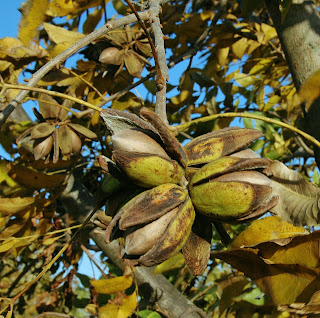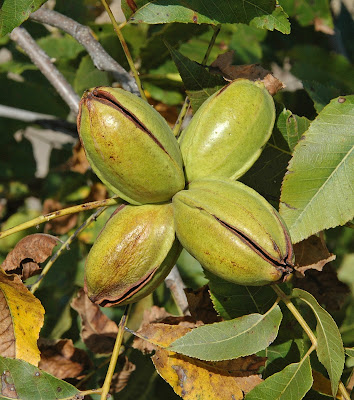 |
| Earlton, 13 Sept. 2024 |
|
|
|
|
Each Fall, I scout my pecan orchard to record the date of 50% shuck-split for each cultivar and breeding selection. As usual, Earlton was the first cultivar to split shuck (photo at right). The first indication of shuck-split is not terribly dramatic. A hairline crack appears in the shuck along the sutures. The shuck will need time to dry a bit before the shuck actually opens up (see below).
 |
Earlton, 20 Sept. 2024
|
One week after I first noticed shuck-split on Earlton, the shucks had dried enough to fully reveal the nut inside the shuck (photo at left). I even noticed one Earlton pecan ready to fall to the ground.
The photos below represent all the pecans that have ripened during the past week. They are published in order of ripening. As a general observation, pecan ripening seems earlier than normal this year.
Earlton, Caney, Liberty and Thayer are cultivars originating from my breeding project. Selections numbered starting with "KT" are unnamed clones from that same breeding program.
 |
| Caney, 16 Sept. 2024 |
|
 |
Liberty, 16 Sept. 2024
|
 |
USDA 61-1-X, 16 Sept. 2024
|
 |
| Thayer, 18 Sept. 2024 |
|
 |
KT121, 18 Sept. 2024
|
 |
| KT307, 18 Sept. 2024 |
|
 |
Gardner, 20 Sept. 2024
|
 |
Pawnee, 20 Sept. 2024
|
 |
USDA 96-2-140
|




























